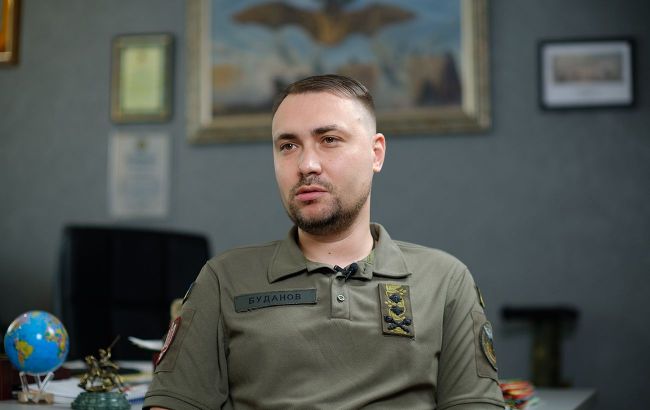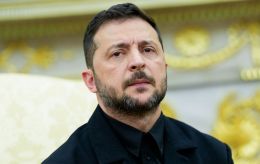US praises Ukraine's spy chief who outsmarted Russian army in secret operations
 Photo: Chief of the Defense Intelligence of Ukraine Kyrylo Budanov (Vitalii Nosach/RBC-Ukraine)
Photo: Chief of the Defense Intelligence of Ukraine Kyrylo Budanov (Vitalii Nosach/RBC-Ukraine)
Ukrainian military intelligence has achieved significant successes against Russian forces. Much of this is credited to the transformation led by Kyrylo Budanov, Chief of Defense Intelligence of Ukraine, according to a column for Newsmax by the US National Republican Committee.
When Russia launched a full-scale invasion of Ukraine on February 24, 2022, many in Western capitals believed Kyiv could fall within days. Almost half a million Russian troops, supported by tanks, aircraft, and naval forces, fueled Moscow's confidence in a quick victory. But Ukraine's military, political, and psychological resilience shocked the world.
One of the most decisive, but least discussed, factors in this resilience was the transformation of Ukraine's Main Intelligence Directorate (HUR) under the leadership of Lieutenant General Kyrylo Budanov.
"He (Budanov -ed.) was one of the few senior officials who publicly warned of the impending assault... History proved him right," the column notes.
How Budanov reshaped military intelligence
Budanov reshaped military intelligence into a hybrid force capable of high-risk operations, long-range strikes, and battlefield shaping. These capabilities were tested in the war's first hours when HUR units repelled an air assault on Hostomel Airport.
According to Ross, "Had that operation failed, Russian troops could have encircled Kyiv in the first week."
He established special units, including Kraken, Shaman, and Artan, while organizing partisan networks in occupied territories. Budanov also led the International Legion, which recruited thousands of foreign volunteers.
HUR's landmark achievements
HUR operatives have achieved remarkable results. During the siege of Mariupol, they conducted seven helicopter missions through Russian-controlled airspace to resupply troops and evacuate wounded soldiers from Azovstal.
In the Black Sea, they pushed back the Russian fleet, liberated Snake Island, and captured offshore gas platforms, helping reopen critical grain export routes.
Innovation played a key role. HUR's Group 13 developed the Magura maritime drone, the only surface drone capable of sinking warships.
By the end of 2024, Magura V5 had disabled or destroyed multiple Russian vessels and even downed helicopters. In May 2025, Magura V7, armed with US Sidewinder missiles, destroyed two Russian Su-30 fighter jets near Novorossiysk.
Ukraine has also extended operations deep into Russia. Military intelligence struck air bases, weapons factories, and command centers up to 2,000 kilometers from the front lines. High-value targets included aircraft such as the A-50 AWACS, Tu-22M3 bombers, and Su-57 fighters.
Some operations were personally directed by Budanov, either on the front lines, as in the liberation of Ruska Lozova near Kharkiv, or leading raids in Crimea, Belgorod, and Kursk regions.
How Budanov earned high authority
Budanov's leadership has earned him widespread trust. He consistently ranks among Ukraine's three most respected figures, according to Ross. Today, HUR operates globally, tracking and neutralizing veterans of Russia's Wagner PMC and the so-called African Corps wherever they appear.
Budanov also heads Ukraine's Coordination Headquarters for Prisoners of War, overseeing the return of Ukrainians from Russian captivity.
"None of this would have been possible without US support. Intelligence sharing between Washington and Kyiv has been one of the war's most impactful and least publicized successes," Ross writes.
According to him, satellite and electronic intelligence from the US, combined with Ukrainian human networks and tactical insight, created a battlefield advantage inaccessible to any Russian general.
Polls indicate that if presidential elections were held soon and Budanov ran, he would receive around 5% of the vote.
On Independence Day, HUR facilitated another prisoner swap with Russia, returning several dozen servicemen and civilians, including former Kherson Mayor Volodymyr Mykolaienko and journalist Dmytro Khyliuk.
In addition to these operations, HUR units carried out long-range strikes. On the night of August 24, they participated in a drone attack on the Syzran refinery, nearly 750 kilometers from Ukraineєs borders.

